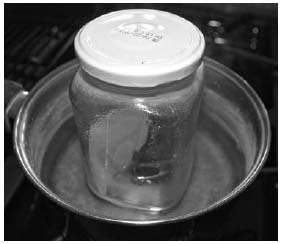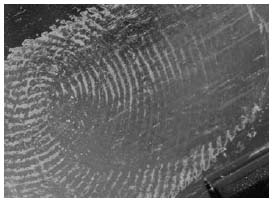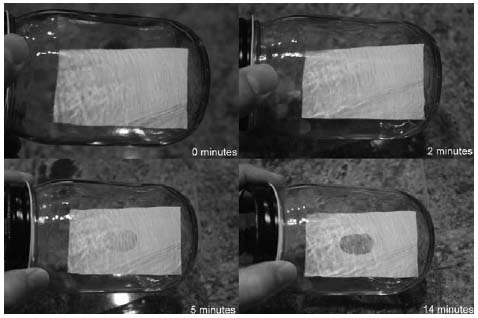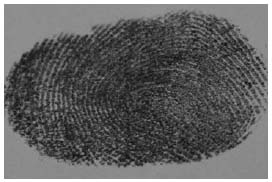Why Is Milk White? (26 page)
Read Why Is Milk White? Online
Authors: Alexa Coelho


To someone fascinated with chemistry, the idea of being a chemist naturally comes to mind. But what does a chemist do all day? How is a chemist different from another kind of scientist? And how is chemistry used in other professions? Doctors, pharmacists, detectives, mechanics, janitors, farmers, firefightersâall kinds of people use chemistry every day, and they depend on their knowledge of chemistry to do their jobs and keep us safe, keep us fed, and keep things moving.
Some chemists study chemical reactions, such as the scientists who monitor both the ozone layer that protects us from the sun and the molecules that destroy ozone in the atmosphere. Other chemists create new kinds of molecules, either to cure diseases such as cancer or to make new plastics or new fibers for the latest fashions. There are millions of other examples, since chemistry is a very broad field.
Vicki Finkenstadt went to school on a basketball scholarship and became a chemist making plastics from corn starch. Mario Molina won a Nobel Prize in chemistry for his work on the decomposition
of ozone. Dianne Gates studies how to clean up radioactive waste, such as that from the Fukushima nuclear power plant that was damaged by the 2011 tsunami in Japan. In studying how nuclear material is spread by weapons, she worked with explosives experts to set off a small bomb and examine the dispersal patterns of the debris.
Ean Warren works for the United States Geological Survey (USGS) in Menlo Park, California, where he studies the chemistry of ocean “dead zones” and how microbes once made a house explode. Lucy Yu is a food chemist who studies the natural antioxidants in whole wheat muffins and how to make healthier pizza crusts with more dietary fiber.
Joseph Francisco worked to discover how to make new superconducting materials before deciding to become a professor of chemistry. Haile Mehansho studies nutrition to find out how to eliminate problems that cause mental retardation and stunted growth. Katherine Glasgow researches plastics for new products. Bernard Gordon is president of his own chemical company, which designs water-degradable fishing line, reducing the environmental impact of sport fishing. Louis Rubens designs plastic foams and the reactions that create the gases in the foams.
Scientists are not the only people who use science to do what they do. And chemists are not the only ones who use chemistry.
Doctors need to know a lot of science to do their job, and they apply the scientific method to find out what is wrong and how best to fix it. Cooks who know a little chemistry can predict what will happen if they substitute ingredients in a recipe. Builders who pour concrete use chemistry every day. So do the people who adjust the chemicals in swimming pools to keep the water safe.
The scientific method can be applied to solve any problem, from determining what is wrong with a car when a mechanic is asked
to fix it to finding out how best to improve education in schools. Knowing some science and how to interpret scientific results is important in selecting your congresspeople when you vote and in selecting the best people to see when you are ill.
Science keeps us safe. People who design cars and bridges use science to make sure they can handle the demands put on them. Doctors who work to prevent epidemics use science to predict where they will spread and how best to stop them. The people who make policy in government need to use science to prevent air and water pollution, to decide which energy sources to promote, and to provide the best foods and education to the people they represent.
Chemists are scientists. Chemistry is a branch of science, so anyone who practices chemistry is doing science.
The study of chemistry involves many parts of other sciences, so in some senses chemists also are sometimes physicists, physicians, biologists, sociologists, economists, mathematicians, astronomers, geneticists, or ecologists. For the same reasons, many scientists in fields other than chemistry end up doing a lot of chemistry. Medical scientists, geologists, botanists, meteorologists, volcanologists, mineralogists, and oceanographers all frequently use chemistry in what they do.
Science is a systematic approach to obtaining knowledge. It can be applied to anything. The scientific method has four parts:
- Observing and measuring
- Forming a hypothesis
- Making a prediction
- Testing the hypothesis
If you apply the scientific method to find out where you left your socks, you are doing science.
LATENT FINGERPRINTS
Adult
supervision
required
Material
Glass microscope slide or other small glass object
Glass jar with cover (big enough to hold the microscope slide)
Paper towel
1 to 2 drops of superglue
Saucepan of water
Kitchen stove
Oven mitts
Jar of iodine crystals from “Extracting Iodine” project (
page 187
) Business card, note card, or other small white card Hairspray
When scientists provide help for law enforcement, that is called
forensic science.
In this project, you will act as crime lab chemists to develop latent fingerprintsâthat is, fingerprints that you normally cannot see and that can't be made visible by “dusting for prints.”
You will use two different chemical techniques in this project. One is good for developing fingerprints on smooth surfaces such as glass or plastic. The other works for surfaces like paper.
The first technique uses superglue, known to chemists as
cyanoacrylate.
Superglue is a liquid that
polymerizes
(hardens) when it encounters water vapor. But a greasy fingerprint makes it harden faster, and that is the key to this technique.

Start out by making a nice fingerprint on a glass microscope slide (a conveniently small piece of glassâyou can substitute a small jar or other glass object).
Rub your finger on your nose or forehead where the oils from your skin are most pronounced, and carefully press your finger on the glass so as not to smudge the fingerprint.
Place the microscope slide in a glass jar. (I used a binder clip to make it stand up, but that is not really necessary.) Next, add a piece of paper towel, moistened with a bit of water. This will provide the water vapor for the glue to harden. Last, add a drop or two of superglue, being careful not to drop it on the slide or the paper but just on the bottom of the jar. You don't want to glue anything down accidentally.
Cover the jar tightly.
Now you want to boil the cyanoacrylate. It boils at a fairly low temperature compared to water, so the easy way to do this is to boil some water, then take the pan off the stove and put the jar into the almost-boiling water.
Look into the jar at where your fingerprint was on the glass slide. It will not take long before it starts to appear, as the cyanoacrylate vapor meets the greasy fingerprint and starts to
harden, leaving a white fingerprint visible on the glass.

If you leave it in the jar too long, the white ridges of the fingerprint will continue to grow more polymer until the ridges merge together and the fingerprint is ruined. So when it looks like a good sharp image of a fingerprint, open the jar and remove the glass slide. The print will look something like the picture below.
Since the superglue hardens into a white print, it would not help very much on a white piece of paper. Luckily, there is another technique for developing latent fingerprints that works very well on paper.
For this you will use the jar of iodine crystals we made in the project “Extracting Iodine” (
page 187
). By this time, there will probably not be any visible crystals in that jar, as they will have evaporated and then recondensed on the walls of the jar in a thin brown film. Don't worry, the iodine is still there and will work nicely for this project.

Rub your finger on your nose or forehead again and press it carefully but firmly on a white card, such as the
back of a business card or a 3-by-5 note card. If the card is too big to fit in the jar, cut it to size. Then simply drop it into the jar of iodine and close the lid again. In less than a minute, you will start to see a faint tan fingerprint appear. Wait a few more minutes, and the tan will develop into a nice dark brown that clearly shows the ridges of your fingerprint.

Make sure you close the jar of iodine so it doesn't evaporate away. You can use it again many times before you have to make a new batch of iodine.

The iodine print will gradually fade away if left in the open air. To preserve it, you can spray it with a little hairspray. The hairspray leaves a thin coating of plastic that holds the iodine in place.